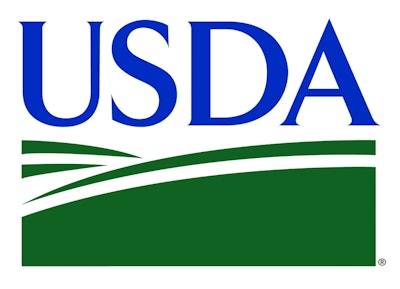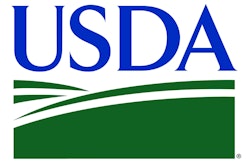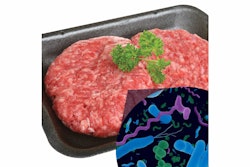
The U.S. Department of Agriculture’s Food Safety and Inspection Service (FSIS) is issuing a public health alert due to concerns about illnesses caused by Salmonella that may be associated with raw, frozen, breaded and pre-browned, stuffed chicken products. These items may be labeled "chicken cordon bleu" or "chicken Kiev".
FSIS was notified of, and is investigating with the State of Minnesota, a Salmonella Enteritidis illness cluster on June 23, 2015. FSIS suspects that there is a link between the frozen, raw, breaded and pre-browned stuffed chicken products and this illness cluster based on information gathered in conjunction with the State of Minnesota Departments of Health and Agriculture. Using epidemiological evidence, case-patients have been identified in Minnesota with illness onset dates ranging from May 9, 2015 to June 8, 2015.
Additionally, on June 24, 2015, FSIS was notified of, and is investigating with the State of Minnesota, a second, separate Salmonella Enteritidis illness cluster with another strain. FSIS suspects that there is a link between the frozen, raw, breaded and pre-browned stuffed chicken products and this illness cluster based on information gathered in conjunction with the State of Minnesota Departments of Health and Agriculture. Using epidemiological evidence, case-patients have been identified in Minnesota with illness onset dates ranging from April 5, 2015 to June 8, 2015.
The products the illnesses may be associated with appear to be ready-to-eat, but are in fact raw and need to be fully cooked before consumption. Frozen, raw, breaded and pre-browned stuffed chicken products covered by this alert and similar products, may be stuffed or filled, breaded or browned.
These investigations are ongoing. FSIS continues to work with the State of Minnesota Departments of Health and Agriculture on both of these investigations and will provide updated information as it becomes available.
Many of these stuffed chicken products were labeled with instructions identifying that the product was uncooked (raw) and did include cooking instructions for preparation. Some case-patients reported following these cooking instructions and using a food thermometer to confirm that the recommended temperature was achieved. Thus, FSIS advises all consumers that particular attention needs to be taken to safely prepare and cook these raw poultry products to a temperature of 165° F. The only way to confirm that raw poultry products are cooked to a temperature high enough to kill harmful bacteria is to use a food thermometer that measures internal temperature, http://1.usa.gov/1cDxcDQ. Additionally, keep raw poultry away from other food that will not be cooked. Use one cutting board for raw poultry and a separate one for fresh produce and cooked foods.
Consumption of food contaminated with Salmonella can cause salmonellosis, one of the most common bacterial foodborne illnesses. The most common symptoms of salmonellosis are diarrhea, abdominal cramps, and fever within 12 to 72 hours after exposure to the organism. The illness usually lasts 4 to 7 days. Most people recover without treatment. In some persons, however, the diarrhea may be so severe that the patient needs to be hospitalized. Older adults, infants, and persons with weakened immune systems are more likely to develop a severe illness. Individuals concerned about an illness should contact their health care provider.
Consumers with food safety questions can "Ask Karen," the FSIS virtual representative available 24 hours a day at AskKaren.gov or via smartphone at m.askkaren.gov. The toll-free USDA Meat and Poultry Hotline 1-888-MPHotline (1-888-674-6854 FREE) is available in English and Spanish and can be reached from l0 a.m. to 4 p.m. (Eastern Time) Monday through Friday. Recorded food safety messages are available 24 hours a day. The online Electronic Consumer Complaint Monitoring System can be accessed 24 hours a day at: http://www.fsis.usda.gov/reportproblem.



















